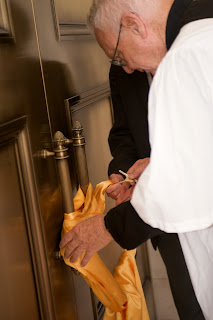Many many apologies for the long hiatus yet again in posting. A few big projects came down the pipe these past few weeks so blogging has fallen to a lower priority rung. However these next few weeks should be much more sane.
Tonight I attended a lecture by architect, theorist and urban planner Leon Krier at Catholic University of America right here in DC. For those of you in the DC/Maryland Area, Mr. Krier will be speaking this Wednesday at University of Maryland on the same topic, the Architecture of Community.
Tonight Krier spoke mainly on traditional urbanism, which makes up the bulk of his scholarship, but in light of our increasing awareness of environmental concerns and energy concerns. He gave a very good argument as he usually does for both traditional urbanism which centers planning around the 10 minute walk, ie, according to human scale and nature, but also on traditional architecture itself.
In previous posts I have made the argument that traditional architecture not only looks better, but that it is more sustainable. I have given a number of arguments showing how traditional construction details, and traditional materials are more adept at dealing with natural forces of wind and weather than experimental modernism. I have tried to show how tradition is not just an aesthetic choice, but is an actual functional part of a building. Tonight Krier was able to sum this up with just one statement, one that I think ought to be declared an axiom of architecture:
"Tradition is not about style, it's about technology."Krier made the argument that traditional details, traditional construction is not about a style, not about aesthetics, but is entirely about technology. Not about experimental technology in the modern sense, but technology that works. Criticisms were raised in the questions after the talk about traditional architecture simply historicism. Krier gave the brilliant response that technology that works, such as the wheel or other discoveries, are not simply historic events, but are truths, and as such are outside of time.
We use wheels all the time, but don't worry about when they were invented, but that we simply recognize their utility and incorporate them into our lives. So too would the case be for construction technology, we simply don't need to reinvent the wheel.
So if it ain't broke, don't fix it!





















